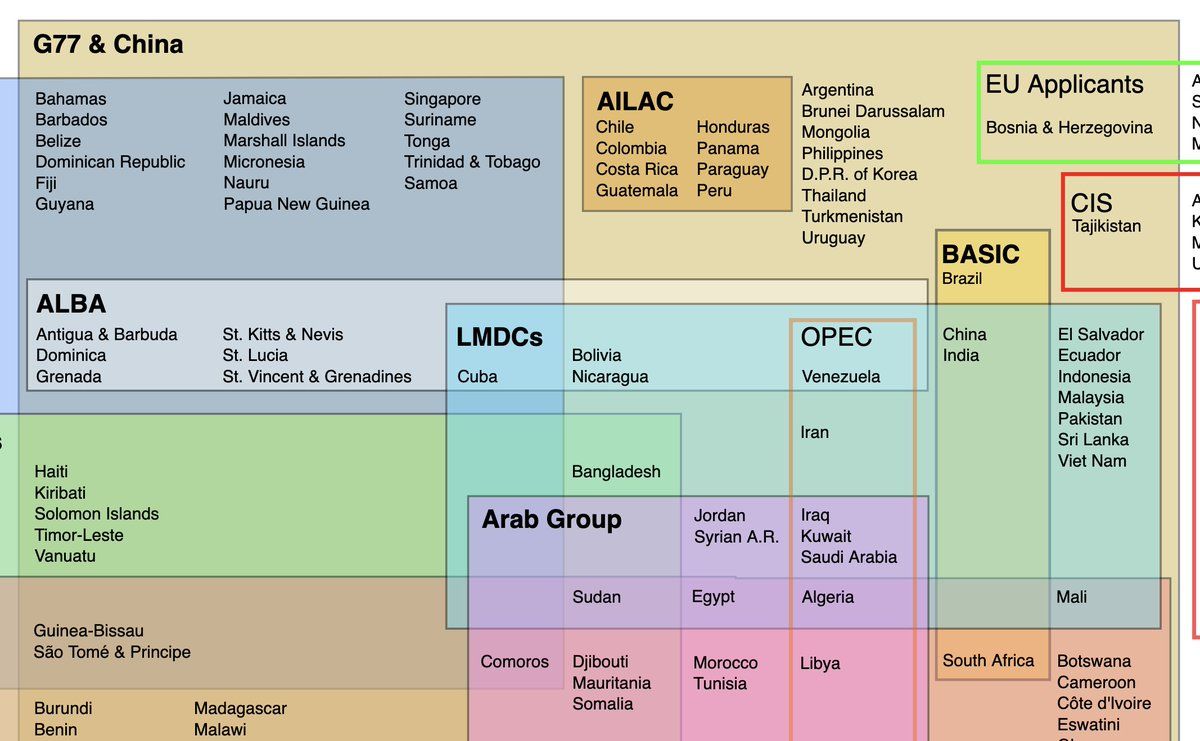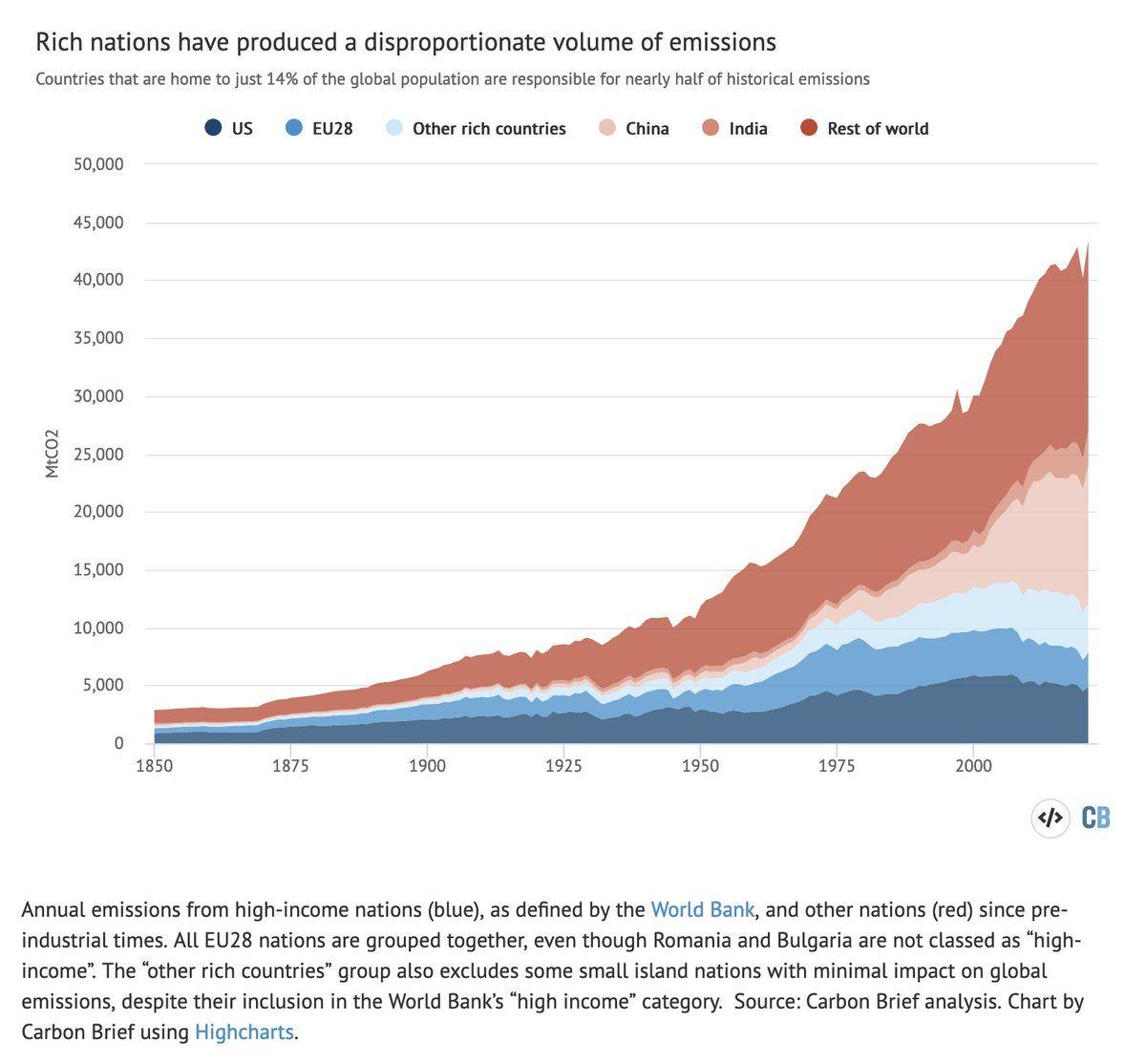-
Detailed thread on the Like Minded Developing Countries' current frustration with pressure to do more on climate. In this analysis, taking up the phrase "carbon colonialism" is a signal of India's red line. @tjayaraman/1464550514494894082
-
The Like Minded Developing Countries are an unlikely coalition of Global Southern powers, including the largest Asian emitters, Arab states (with and without oil), and the Latin American hard left (+ Ecuador and El Salvador). en.wikipedia.org/wiki/Like-Minded_Developing_Countries
-
Thanks largely to the its Asian membership (China, India, Indonesia, Pakista, Bangladesh, Malaysia being the largest), most living humans are in the LMDC.
-
So, the central argument of the LMDC is around a particular notion of carbon colonialism. Bolivia, as an indigenous-party-led developing country has been uniquely placed to make this argument. commondreams.org/news/2021/11/02/bolivian-president-warns-carbon-colonialism-wont-solve-climate-crisis
-
… But Bolivia's domestic policies are not in line with the proposal "to change the model of civilization and move towards an alternative model to capitalism" … @CarwilBJ/1455574212366807043
-
… and essentially none of the rest of the LMDCs are proposing any such civilizational shift.
-
Instead, what carbon colonialism amounts to is a case for "sharing the carbon space" to allow all countries to develop. hindustantimes.com/india-news/target-of-net-zero-emission-against-climate-justice-lmdc-101634582732401.html
-
The LMDC position laid out here is that “Developed countries should, in acknowledgement of historical … emissions, leave the remaining atmospheric space for the developmental rights of the developing world and aim for their full decarbonisation within this decade."
-
"There is only around 460bn tonnes of carbon dioxide (GtCO2) – or 11.5 years of 2020-level emissions – of the global carbon budget remaining beyond 1 January 2021 before being committed to 1.5C of warming." carbonbrief.org/in-depth-qa-what-is-climate-justice
-
So rich countries would go net/full zero by 2030, while developed countries would get later targets.
-
India pledges at COP26 were in lie with this view, and would have the country "achieve net zero carbon by 2070." orfonline.org/expert-speak/indias-cop26-pledges-ambitious-but-ambiguous/
-
However, the emissions space = development space vision of equity presumes that investments in burning coal, oil, and gas provide more energy than renewables. The cost crash in renewables has reverse that assumption. newscientist.com/article/mg25133460-100-can-low-income-countries-leapfrog-to-clean-energy-technologies/
-
To the extent that renewables require greater up front investment AND to the extent to which historical imbalances should be compensated for, rich countries can and should subsidize poor ones to swing hard to renewables now.


